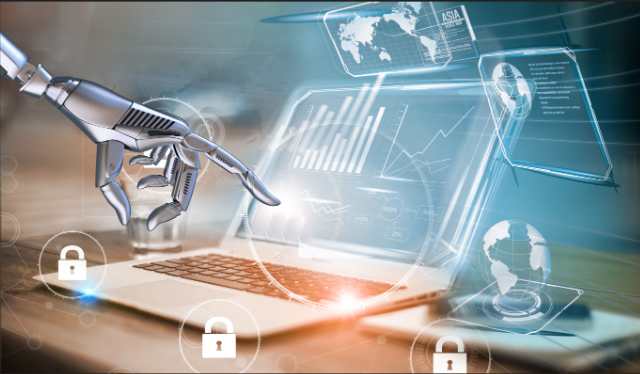Home >Technology peripherals >AI >How industries can leverage edge AI to maximize revenue
How industries can leverage edge AI to maximize revenue
- WBOYWBOYWBOYWBOYWBOYWBOYWBOYWBOYWBOYWBOYWBOYWBOYWBforward
- 2023-09-15 12:49:011355browse

As we all know, artificial intelligence consumes computing power and requires a large number of data centers. But under the right circumstances, its impressive capabilities can exist on smaller, more portable devices.
Edge AI is the practice of placing artificial intelligence systems on decentralized hardware devices closer to the data source. This approach can reduce latency, increase privacy, reduce data transfer from one device to another, and improve the performance of native AI applications. However, it may also require more computing power than other common cloud computing workloads.
Edge AI provides performance benefits in keeping compute close to data sources, ensures security when privacy protection is a priority, and provides logistical advantages when collecting data in hard-to-reach locations. Edge AI use cases that business leaders should know about are emerging across vertical markets. Key examples to explore are manufacturing and production, healthcare, energy, transportation, and retail.
Edge Artificial Intelligence and Edge Computing
Edge artificial intelligence is the direct application of intelligent computing power to devices such as smartphones, smart refrigerators and other Internet of Things devices. These devices can make decisions without waiting for information to be sent over the Internet. Edge computing is about moving computing work closer to data collection. In addition to artificial intelligence decision-making, edge computing also includes tasks such as data storage and simple processing. Anand Rao, global artificial intelligence leader at PwC, said edge artificial intelligence is revolutionizing how many industries treat their products and operational data. How to collect and utilize Edge computing runs many powerful systems, such as those used for hospitalization monitoring and predictive maintenance. Edge AI enhances the performance of such tasks. For example, it can use computer vision to detect important events, such as patient slips and falls, from local devices and then send alerts to medical staff. Other examples of edge device add-on capabilities include natural language processing and predictive analytics.
Bharath Thota, partner in the advanced analytics practice of global strategy and management consulting firm AT Kearney, said: “Edge AI and edge computing are changing the way we process data and extract value from data, but they do so in different ways. ."
Benefits of edge artificial intelligence to enterprises
Benefits to enterprises include reduced costs associated with network load in high data volume scenarios, privacy protection for sensitive applications, and improved inference Performance and accuracy. Edge AI also increases efficiency and reduces costs by pushing complex AI calculations to local devices. This reduces the reliance of AI inference workloads on large centralized computer systems and servers. In situations where applications need to perform real-time analysis on data, proximity to the data source can reduce latency.
Edge artificial intelligence can improve data security. It protects potentially sensitive data inputs by localizing the data collection process, making predictions at the data source, and limiting external network traffic to only the output of the AI model. Edge AI is a reliable solution for remote devices and operations with unstable network connections
In this paragraph, Lucas Liu, senior director at global consulting firm Protiviti Consulting, said, Edge AI can enable a variety of new use cases by reducing latency and reducing the need for an internet connection. In these scenarios, applications can run faster with an edge computing setup
Industry-specific use cases for edge AI
Industry use cases include the following:
Manufacturing and Production: Edge AI improves predictive maintenance of a fleet or group of production equipment. AI models predict when equipment is most likely to fail. Algorithms running locally analyze the machine's vibration, thermal and acoustic data, among other factors. They do this in high resolution and in real time. The insights gleaned from analysis are the outputs.
Through data cleaning and anomaly detection: Can improve large-scale data collection efforts in manufacturing plants and field operations. Performing these tasks locally reduces data overhead and improves response times.
Healthcare: Edge AI helps monitor patients in real-time, improving care and safety. Wearable devices on patients collect health data. When AI-based information analysis occurs locally, it reduces bandwidth consumption and enhances data privacy compared to transmitting data to be processed centrally.
energy. Edge AI can monitor devices in real time. This can help predict when energy equipment, such as power plants and wind farms, may need repairs, as in manufacturing use cases. Additionally, it could improve tools for studying energy usage data to identify busy times, predict usage patterns, and improve how factories allocate energy.
Transportation: Edge artificial intelligence processes data from sensors attached to vehicles in real time, enabling autonomous vehicles to understand their surroundings, make decisions and navigate quickly. It can also provide warnings when the car leaves its lane and enhance driver assistance systems.
Retail: Edge AI improves security incident detection by processing video streams that support loss prevention.
The above is the detailed content of How industries can leverage edge AI to maximize revenue. For more information, please follow other related articles on the PHP Chinese website!

